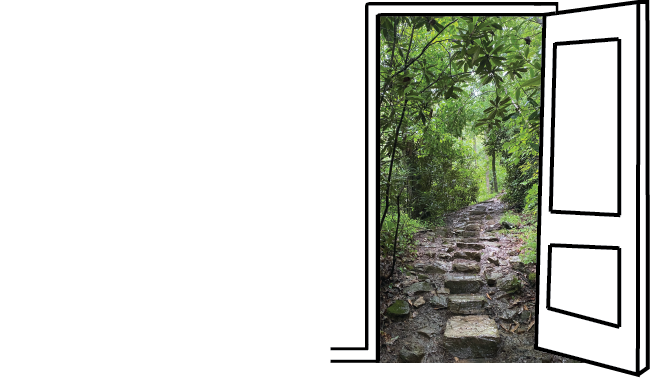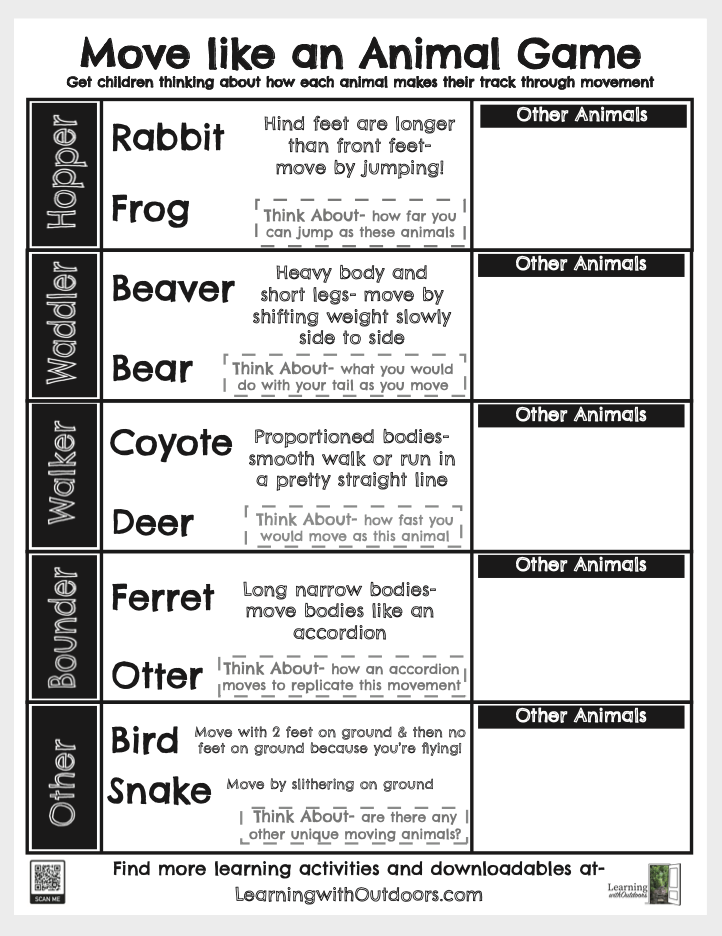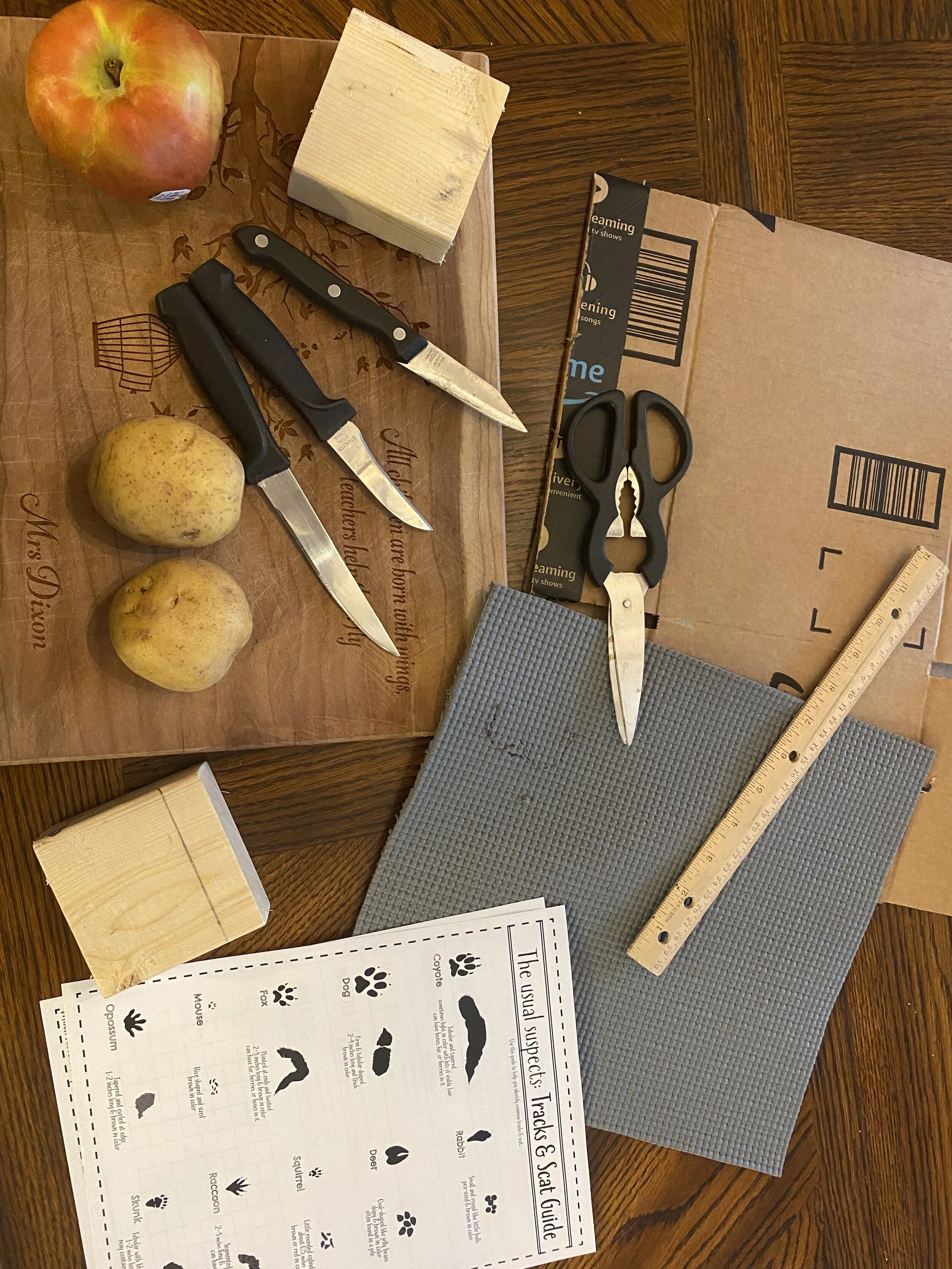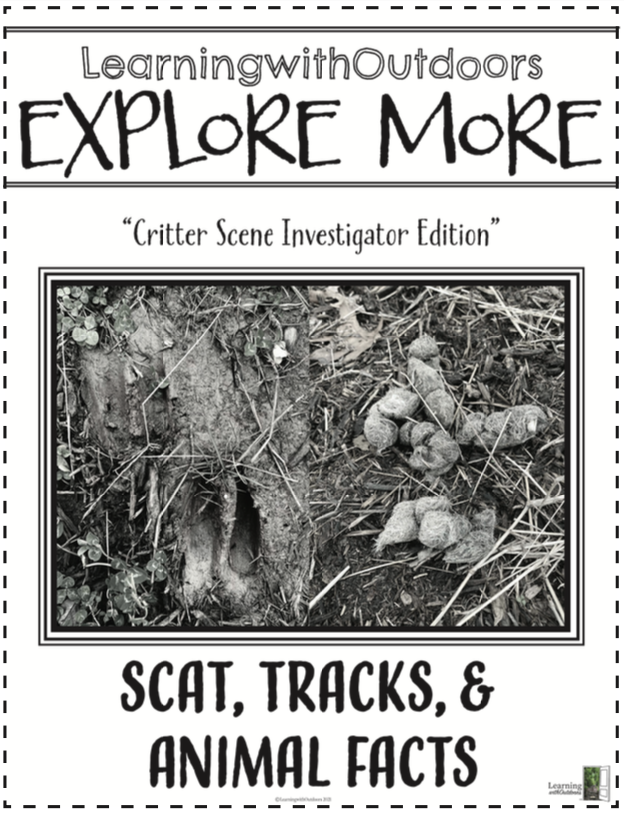Animal Tracks
A hands-on introduction to learning all about Animal Tracks
Understanding
Animal Tracks:
Help children understand these three basic ideas through a simple and fun activity:
How animal tracks are made
What part of animals’ bodies will be visible in the track
What surfaces best show animal tracks
How to set up an easy track provocation to let children self-explore:
Include a variety of animals for children to use as ‘stamps’ to make tracks
(ex. snake to show their unique footless track, birds to show two claw prints, bears to show big prints and nails, lizard to show four feet and a tail, etc.)
Provide different surfaces for the animals to track through
(ex. snow, dirt, mud, water, and sand all in different containers or trays for play)
Make your own Animal Track Challenge!
This can be a fun STEM challenge for children to think about what they can use to make their own animal tracks.
There are soooo many different ways to create your own animal track!
Create your animal track shape, here are some possible materials to use:
Cardboard
Potatoes
Apples
Foam
Clay
Styrofoam
Thick paper
2. Once you have created your animal track shape, you can then decide how you wish to make it into a good ‘stamper’:
Add a toothpick, stick, or straw
Glue it to a wooden block or something similar to make it like a real rubber stamp
(we found this works the best for continuous use!)
3. Then test your stamper outside in the mud, dirt, snow, or sand OR inside with paint or ink!
‘Explore More: Scat & Tracks'
Learning Magazine
Download this learning tool to help your young investigator safely hunt and analyze tracks!
Children can harness their math skills (measuring, geometry, arithmetic, graphing), language arts skills (writing, reading, vocabulary), science skills (animals, contrast, compare), and problem solving skills all while having fun and exploring scat and tracks!
Learn more about our 13 page bundle of hands-on learning in the great outdoors!





